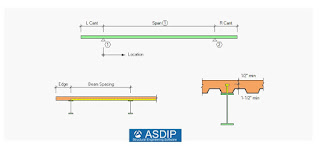Overview of Composite Beam Used in Structural Engineering
Composite beams are structural members that are made out of two or more than two dissimilar materials joined together to work like a single unit. An example in structural engineering is the steel-concrete composite beam. Here, a steel wide-flange shape is attached to a concrete slab floor. The different kinds of composite beam are: steel-wood, plastic-concrete and wood-concrete. You may also see advanced composite materials like concrete. Composite beams as defined here vary vastly from beams made from fiber-reinforced polymer materials.
There are mainly two benefits of using composite action in structural engineering. The first is that by rigidly joining the two parts, the output is a much stronger system than the two individuals. The second benefit is that composite action can make use of the properties of each individual material in a better way. There are various composite beam design software application that can help you with the same.
The steel-concrete beams are some of the most recognized ones in the industry. They are also the most economical structural systems for regular steel bridges as well as multistory steel buildings. Both bridges and building structures require a floor slab so that can provide the surface to vehicles and occupants, respectively. Concrete is the go-to material for making the slab, thanks to its mass and stiffness that prove highly efficient to reduce vibrations and deflections of the floor system. Additionally, it can also provide the much-needed fire protection. The assisting system under the slab, must be made from steel because it provides superior handling convenience and rapid construction cycles.



Comments
Post a Comment